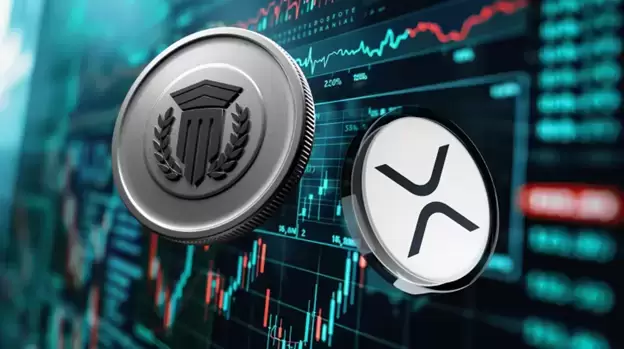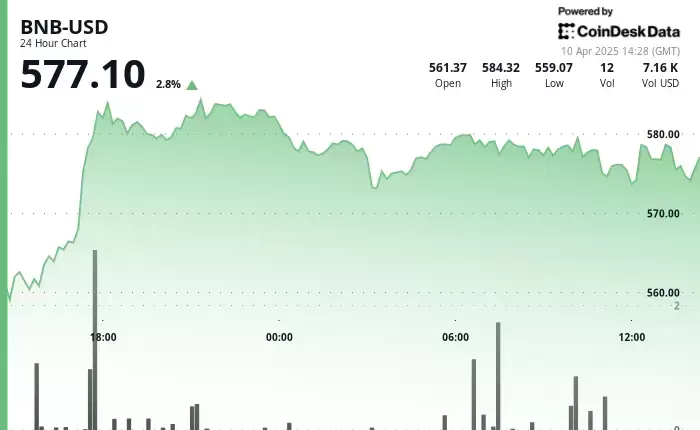 |
|
 |
|
 |
|
 |
|
 |
|
 |
|
 |
|
 |
|
 |
|
 |
|
 |
|
 |
|
 |
|
 |
|
 |
|
加密貨幣投資越來越受歡迎,您可能想知道不同加密貨幣的價格;或者代幣 X 是否是更好的投資

Key Takeaways
重點
Tokenomics in Crypto 101
加密貨幣 101 中的代幣經濟學
As cryptocurrency investment gains popularity, you may be curious about the varying prices of different crypto tokens; or whether token X is a better investment than token Y. With over 9,000 crypto coins and tokens to choose from, you could wonder if there’s a skill that helps users understand the economics of crypto projects.
隨著加密貨幣投資的普及,您可能會對不同加密貨幣的價格差異感到好奇;或者代幣 X 是否比代幣 Y 更好。
Tokenomics in crypto is the essential investment rulebook explaining the monetary asset policies of cryptos: their essence, supply, demand, and their relevance to making investment decisions.
加密貨幣中的代幣經濟學是解釋加密貨幣貨幣資產政策的重要投資規則手冊:其本質、供給、需求及其與投資決策的相關性。
What are Crypto Tokenomics?
什麼是加密代幣經濟學?
Tokenomics is a merger of two words: ‘token’ and ‘economics.’ It refers to all elements of a crypto asset that make it valuable and alluring to potential investors. Tokenomics in crypto involves scrutinizing features like the functionality, creation and distribution, allocation policy, objective, and emission schedule of a cryptocurrency.
代幣經濟學是兩個字的合併:「代幣」和「經濟學」。它指的是加密資產中使其有價值並吸引潛在投資者的所有要素。加密貨幣中的代幣經濟學涉及仔細審查加密貨幣的功能、創建和分配、分配政策、目標和發行時間表等特徵。
Tokenomics in crypto, which is a study of how cryptocurrencies work within the broader ecosystem, deals with factors that include elements that influence an asset’s use and value, supply and demand, burn schedules, and incentives. All these are essential qualities you should carefully consider before committing your funds to a select cryptocurrency.
加密貨幣中的代幣經濟學是對加密貨幣如何在更廣泛的生態系統中運作的研究,涉及的因素包括影響資產的使用和價值、供應和需求、銷毀時間表和激勵措施的因素。所有這些都是您在將資金投入選定的加密貨幣之前應該仔細考慮的基本品質。
Cryptocurrencies run on public blockchains open to everyone, including unscrupulous actors waiting to pounce on new and ignorant investors. By employing crypto tokenomics in the digital asset ecosystem, projects can easily create trust and inhibit the bad actors, thereby creating a robust long-term investment-friendly environment.
加密貨幣在向所有人開放的公共區塊鏈上運行,包括等待攻擊新的無知投資者的不道德行為者。透過在數位資產生態系統中採用加密代幣經濟學,專案可以輕鬆建立信任並抑制不良行為者,從而創造一個強大的長期投資友善環境。
Tokenomics in crypto ultimately reveals the actual value of a token, motivates adoption, controls the inflation rate, and promotes sustainable growth. You can learn the different metrics of understanding a crypto project’s tokenomics by studying a project’s whitepaper.
加密貨幣中的代幣經濟學最終揭示了代幣的實際價值,激勵採用,控制通貨膨脹率並促進永續成長。您可以透過研究專案的白皮書來了解了解加密專案代幣經濟學的不同指標。
Why Crypto Tokenomics Matter in Bitcoin Trading
為什麼加密代幣經濟學在比特幣交易中很重要
The role of tokenomics in crypto emanates from the fact that, unlike fiat currencies, there are no government laws and regulations governing cryptocurrencies. Tokenomics, therefore, offer industry players a chance to evaluate other details of cryptocurrencies besides their prices on different exchanges.
代幣經濟學在加密貨幣中的作用源於這樣一個事實:與法定貨幣不同,沒有管理加密貨幣的政府法律和法規。因此,代幣經濟學為行業參與者提供了評估加密貨幣在不同交易所的價格之外的其他細節的機會。
You can compare the role played by tokenomics to how central banks control monetary policies to create efficient economies while facilitating the growth of their respective ecosystems. Every investor should learn tokenomics in crypto as it plays a critical role in influencing a token’s future price and whether a project has what it takes to attain the targets specified in its roadmap. While a crypto projects team’s expertise, dedication, concept, or funding from venture capitalists and investors are essential factors to consider when analyzing a crypto project’s potential, crypt tokenomics determines an asset’s ultimate success or failure.
您可以將代幣經濟學所扮演的角色與中央銀行如何控制貨幣政策以創建高效的經濟體同時促進各自生態系統的成長進行比較。每個投資者都應該學習加密貨幣中的代幣經濟學,因為它在影響代幣的未來價格以及專案是否有能力實現其路線圖中指定的目標方面發揮關鍵作用。雖然加密專案團隊的專業知識、奉獻精神、概念或來自創投和投資者的資金是分析加密專案潛力時需要考慮的重要因素,但加密代幣經濟學決定了資產的最終成功或失敗。
Crucial Factors in Crypto Tokenomics
加密代幣經濟學的關鍵因素
Tokenomics covers a cryptocurrency’s different aspects, including its creation, management, or removal. The most crucial factors you should understand include:
代幣經濟學涵蓋了加密貨幣的不同方面,包括其創建、管理或刪除。您應該了解的最關鍵因素包括:
Token Distribution: Crypto projects use different methods to distribute coins to prospective users, or no one will use them: they include crypto miners, validators or initial coin offerings (ICOs), and others.
代幣分發:加密項目使用不同的方法將代幣分發給潛在用戶,否則沒有人會使用它們:它們包括加密貨幣礦工、驗證器或初始代幣發行(ICO)等。
Price Stability: Cryptocurrencies are almost synonymous with price volatility. A project protects price stability by ensuring a steady supply of coins to match the supply levels as people use the coin for its intended purpose. Successful projects have a formula for preventing speculators from buying and selling tokens en masse and curtailing the flow of coins to match the supply levels.
價格穩定性:加密貨幣幾乎是價格波動的代名詞。當人們將代幣用於其預期用途時,一個項目透過確保穩定的代幣供應來匹配供應水準來保護價格穩定。成功的專案有一個公式可以防止投機者大規模買賣代幣,並減少代幣的流動以匹配供應水準。
Governance: Different projects employ different approaches regarding the creation or minting of coins and how they enter or leave the network. While some projects like Ripple (XRP) hold some tokens in reserve so they can be added later into the ecosystem and others like Augur (REP) employ a hands-off approach, networks like Tether (USDT) ‘burn’ tokens to help regulate the coin’s value.
治理:不同的項目在硬幣的創建或鑄造以及它們如何進入或離開網路方面採用不同的方法。雖然Ripple (XRP) 等一些項目持有一些代幣儲備,以便稍後將其添加到生態系統中,而Augur (REP) 等其他項目則採用不干涉的方法,但Tether (USDT) 等網絡會“銷毀”代幣來幫助監管硬幣的價值。
Future Adaption: The crypto space is still developing and changes relatively fast, meaning some aspects for which tokens were created may not work in the future. How a crypto project is governed determines how adaptable the network will be as the web grows and matures in an ever-changing ecosystem.
未來適應:加密貨幣領域仍在發展且變化相對較快,這意味著創建代幣的某些方面可能在未來不起作用。隨著網路在不斷變化的生態系統中發展和成熟,加密專案的治理方式決定了網路的適應性。
Examples of Tokenomics Models
代幣經濟學模型的範例
Just like no economic model is perfect, there are different cryptocurrency tokenomics models with other pros and cons. The most popular ones are:
就像沒有完美的經濟模型一樣,有不同的加密貨幣代幣經濟模型,各有優缺點。最流行的是:
Deflationary Model
通貨緊縮模型
Crypto tokens like Bitcoin (BTC) and Cardano (ADA) operate a deflationary tokenomics model where a set number of coins are created that can never be added. The supply of deflationary currencies stays the same even if the demand increases.
比特幣(BTC)和卡爾達諾(ADA)等加密代幣採用通貨緊縮代幣經濟模型,其中創建了一定數量的代幣,且永遠無法添加。即使需求增加,通貨緊縮貨幣的供應也保持不變。
Advantages: The limited supply of coins gives the token value as the demand increases and the supply reduces.
優點:代幣的供應有限,隨著需求的增加和供應的減少而賦予代幣價值。
Disadvantages: The system incentivizes users to hoard tokens as they speculate for better prices.
缺點:此系統會激勵用戶囤積代幣,以期獲得更好的價格。
Inflationary Model
通膨模型
Inflationary coins like Ethereum (ETH) and EOS (EOS) run a system that resembles fiat currencies as they have no cap limit. While some cryptos limit token creation annually, others rub on a model that has a schedule set in endlessness.
以太坊 (ETH) 和 EOS (EOS) 等通膨代幣運行的系統類似於法定貨幣,因為它們沒有上限。雖然一些加密貨幣每年限制代幣的創建,但其他加密貨幣卻採用了無限時間表的模型。
免責聲明:info@kdj.com
所提供的資訊並非交易建議。 kDJ.com對任何基於本文提供的資訊進行的投資不承擔任何責任。加密貨幣波動性較大,建議您充分研究後謹慎投資!
如果您認為本網站使用的內容侵犯了您的版權,請立即聯絡我們(info@kdj.com),我們將及時刪除。
-

- GameStop(GME)已將其名稱添加到採用比特幣財政部策略的公司陣容中
- 2025-04-11 01:45:12
- 除了其第四季度的收益報告外,該公司表示,董事會一致批准了將比特幣作為國庫券資產。
-

- 2025年前7名云挖掘平台的終極列表
- 2025-04-11 01:45:12
- 在技術突破和不斷變化的市場需求的推動下,雲開采的世界正在迅速發展。
-

-

- Lifedog - 改變硬幣的遊戲規則
- 2025-04-11 01:40:12
- 在過去的幾年中,加密社區看到了許多狗模因硬幣。即使是那些在$ shib或$ floki上損失了巨額資金的人,也繼續投資於新的炒作。
-

- 隨著市場情緒開始從合併轉變為準備,加密貨幣持有人開始重新評估其投資組合
- 2025-04-11 01:35:12
- 這種轉變不僅僅是追逐下一個新硬幣。它反映了戰略的變化。而TRX和XRP隨著時間的推移表現出彈性
-

-

-

-


















![super Mario World Koopa Troopa 100%96⭐️ +硬幣[AO Vivo] super Mario World Koopa Troopa 100%96⭐️ +硬幣[AO Vivo]](/uploads/2025/04/10/cryptocurrencies-news/videos/super-mario-koopa-troopa-coin-ao-vivo/image-1.webp)









































